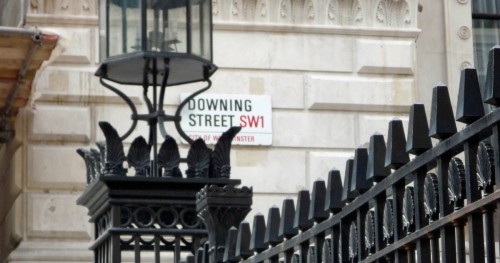Freelancers, the National Insurance increase is a shock but not a fatal one

You have to go back to 2017 to hear the government of the same political hue we have currently, assert something that would probably make most freelance sole traders spit out their morning coffee today, given they face a 1.25 percentage point increase in National Insurance, writes Carolyn Walsh of accountants CWC Solutions.
“The self-employed make a valuable contribution to the UK economy.” This rare government endorsement of freelance professionals is stated in a still-available HM Treasury document. The 2017 document has the seminal title ‘National Insurance and the Self-Employed.’
Then, and now
Well, what definitely hasn’t changed since way back then, is the government’s rationale. In other words, its thinking about the self-employed when it comes to them paying into the exchequer.
In particular, in the 2017 document, the government says that the “foregone NICs from lower rates paid by the self-employed compared with employees” poses “significant fiscal challenges.” This is both language and thinking that remerged from the government six years later when, unveiling the SEISS in March 2020, chancellor Rishi Sunak denounced the “inconsistent” National Insurance contributions which the exchequer receives.
Building at the time on the government’s 2017 position, and part explaining how sole traders are now facing a hike in Class 4 NICs, Mr Sunak said last year: “If we all want to benefit equally from state support, we must all pay in equally in future.”
Health and Social Care Levy: an introduction
So little wonder, then, that NI contributions for the self-employed have now been set by prime minister Boris Johnson to increase by 1.25% from April 2022, and then from 2023, the underlying ‘health and social care levy’ will be separated out. The levy will be paid by all working adults.
This 1.25% rise is meant to fund the reform of social care and go towards NHS backlogs exacerbated by the coronavirus. It’s interesting to note that the levy comes into play from April 2023, although a year prior to that, working people (under pensionable age) are going to pay NI contributions at the same level. So by the time the levy comes into force, everyone except those of working pensionable age will be familiar with paying the extra 1.25% in NI contributions. It’s quite a politically astute move, to avoid fuss but still get what the exchequer wants.
A shock, yes, but also a potential sign of things to come
Given we knew what the government wanted from the self-employed back in 2017, this new rate of Class 4 NI has been on the horizon for some time. Nonetheless, the 1.25% percentage point rise in NI contributions for all earned income has still come as a shock.
But as I told FreelanceUK earlier this week, the government may not be done yet. Its 2017 thinking, you see, was to make the self-employed pay more in NI in return for statutory benefits like Statutory Sick Pay. As the 1.25% increase is isolated from that objective, my gut feeling is that HM Treasury is not going to stop at 10.25% -- which is the maximum amount sole traders are currently set to pay in Class 4 NICs under the PM’s announcement.
Indeed, with a new Workers’ Watchdog, the TUC, and the Labour party all looking at shoring up the rights of the workforce, NI for the self-employed might, ultimately, need to rise to an almost equal basis as Class 1 NICs.
Two big questions freelancers should be asking
So while they may be reeling from the incoming 1.25% on their NI payments to HMRC, the savvy self-employed should find the time to calmly ask themselves two big questions.
First, will the rise in the underlying rate of Class 4 NI still go ahead, and if so when?
And secondly, will the trajectory of NI set out by Mr Johnson – i.e. freelancers paying more than 10% of trading profits in NI contributions, make my self-employed business viable, especially when my personal tax liabilities are taken into account?
Where ‘no’ is the answer to this second question, some self-employed may decide to incorporate their business. Given that sole traders (who can demonstrate they have ‘badges of trade’) should have less issue with IR35, becoming a limited company should be a key consideration. The business tax regime for incorporated businesses is still preferential, although be aware there is a 1.25% increase in dividend payments from April 2022, alongside more rigorous duties to carry out as the owner of business registered on Companies House. This incorporation route will likely appeal to sole traders genuinely in business on their own account who aren’t looking to benefit from ‘welfare’ payments. These payments are the upside if the underlying rate of Class 4 is increased beyond the PM’s 1.25%.
Invest if you won't incorporate
But what if you’re a freelancer who doesn’t fancy moving from sole trader to limited company? And what if you don’t fancy the Class 4 NICs hike either? Well, the option for you is to remain as a sole trader and instead of paying an extra 1.25% of the business profit to the taxman from next year, simply invest into yor venture. Investing in your sole trader business may have an advantageous impact on your commercial operations. And it could even lead to a higher future turnover!
At the time of writing, the Association of Independent Professionals and the Self-Employed is accusing the government of making policy decisions, like the 1.25% addition on both dividends and NICs, that make working as a freelancer “almost impossible.”
Comparatively less of a sting if you're self-employed
My belief is that the rise in National Insurance will hopefully not hamper or deter the setting up of new self-employed businesses. The tax rises in play are minimal, and with the Class 4 hike, there is still a three percentage point lead over Class 1 as the differentialis maintained.(N.B. National Insurance is chargeable on earnings, and for the self-employed that’s invoice less expenses, so the overall percentage is less for the self-employed than the employed anyway.)
Standing back from the nitty gritty, if lower taxation is a draw to self-employment, it will remain a draw.
But the main reasons to become self-employed appear to be experiencing a resurgence – partly thanks to covid, notably the desire of people to increase the value of their labour, skills or services, and personal reasons like redundancy or the desire to work remotely, flexibly with a better work-life balance.
Freelancing? There's (still) value in that
Even more fulfilment at work is something we’re all seeming to crave as we emerge from lockdown, and that’s still achievable through the increased opportunities and freedoms which only the independent labour market can provide in abundance. In short, even if the government isn’t looking like it values the contributions which the self-employed make (as it claimed in 2017), it doesn’t seem likely that this marginal tax increase will do too much to dilute the value that self-employed people continue to derive from their unique way of working.



Comment
Log in or create your account to react to the article.